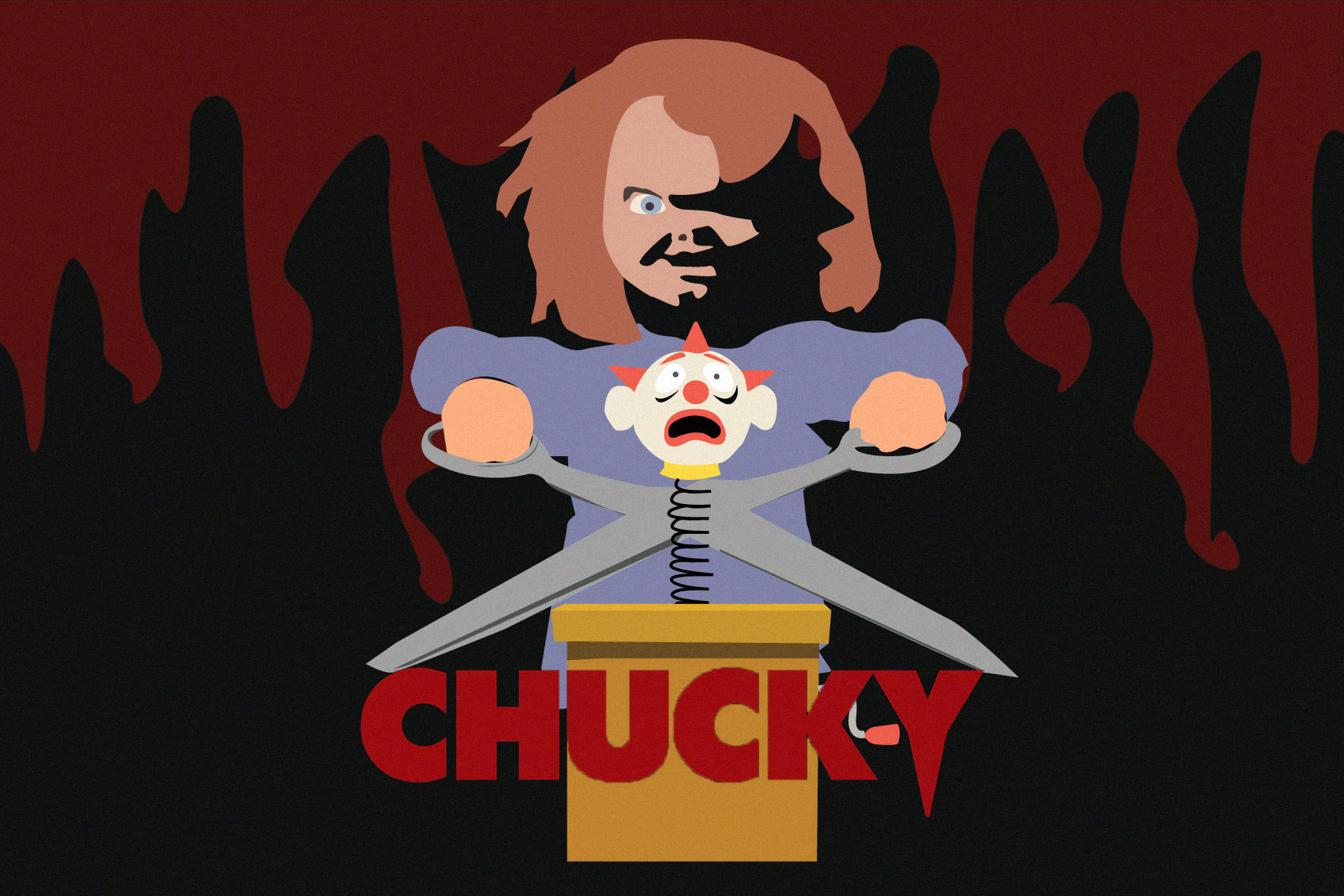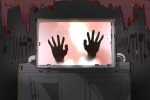Chucky is a pop culture icon, his scarred face and crass one-liners common knowledge even thirty years after his introduction. Even kids who haven’t seen his movies can recall at least one time the idea of the killer doll gave them a scare. But not many know that the franchise has maintained continuity consistently across its seven movies and its television show.
It’s an impressive feat of writing skill to keep the same story going for that long, especially in the horror genre where soft reboots and plot holes occur fairly frequently in long-running series. Its various cast and crew members have returned time and time again to reprise their roles for each project, including Brad Dourif as the voice for Chucky, Jennifer Tilly as Tiffany Valentine, and director Don Mancini.
Aside from the characters, one theme has consistently appeared across the Chucky franchise:breaking or subverting gender norms.
Anyone familiar with the “Chucky” TV show, whose third season premieres Oct. 4, has likely picked up on this due to the show’s more overt portrayals of queerness.
These themes are present even going back to the first movie, “Child’s Play.” After all, it stars a young boy who forms a bond with a doll, a toy more often associated with little girls. And when you view the Chucky franchise from start to finish, you can see Mancini’s messages about queer struggles pretty clearly.
Granted, we do not see any overtly queer characters until the later additions of the series. The first movies came out in the 80s and 90s, after all, when openly gay characters weren’t accepted by the public. Mancini, a gay man himself, endeavored to subtly portray queerness as a result.
The first three movies, “Child’s Play” 1, 2, and 3, all follow Andy Barclay as he grows up and has multiple conflicts with Chucky. In the first film, Andy’s mother raises him alone, his father having left them, and Chucky becomes a sort of fill-in paternal figure for Andy for a while. He desperately needs the doll’s approval, and Chucky is all too willing to take advantage of his desire for acceptance.
This aspect of the films mirror the experiences of many queer youths—feeling misunderstood by their parents or isolated from their family unit. Ultimately, Chucky tries to get Andy to kill his mother, showing how youth who are abandoned by their families can end up in dangerous situations. Ultimately Chucky fails in this movie, but the psychological toll on Andy is evident in the rest of the series.
Mancini takes things to a higher degree in “Child’s Play 2,” when Andy’s mother is hospitalized, and he is sent to live with a foster family. They regard him as unwell and his obsession with the doll as unsavory. This theme continues in “Child’s Play 3,” when an older Andy is sent to a military academy. The academy is a breeding ground for homophobia, with the military instructors insulting Andy for his history with dolls and the need to conform to a male standard being strong.
Again, this original trilogy doesn’t overtly deal with any queer characters, but Andy’s queer coded nature is difficult to miss when you compare his life to Mancini’s.
It wasn’t until the controversial fifth film of the series, “Seed of Chucky,” that any openly queer characters entered the scene. And even the most diehard fans of the series will admit that the movie’s handling of gender queerness is iffy at best. A new character is introduced: Glen/da, the “gender queer”-coded spawn of Chucky and Tiffany Valentine, Chucky’s lover-turned-fellow-doll from the fourth film, “Bride of Chucky.”
Unlike Chucky and Tiffany, who were human beings put into dolls, Glen/da is born a doll and “grows up” without a consistent identity. As a result, Glen/da struggles with defining themselves, unsure whether they wish to be a boy or a girl. The movie sees Chucky, an overbearing father with misogynist tendencies, pushing for his child to take on a masculine identity, while Tiffany wants Glen/da to be her daughter.
In the end, Glen/da decides to be both, taking on a genderfluid identity that wasn’t often portrayed in mainstream movies during the 2000s. That alone isn’t a bad handling of the subject. The issue lies in the movie’s portrayal of Glen/da as a sort of hybrid, divided persona of masculine and feminine traits. Additionally, the fact that they are a serial killer and the very strange rape subplotdrown the whole thing in problematic oddness.
Unfortunately, this movie tanked the franchise for a while. It would be another nine years before the next movie in the series, “Curse of Chucky,” would come out, and even then, it would go direct to home video. Horror franchises are constantly dancing on thin ice, and there’s always a likelihood of a single,bad product bringing the entire series crashing down.Regardless, it wasn’t good for the first Chucky movie to openly deal with queer topics to perform so poorly.
Luckily, this was not the end of Chucky’s relevance. After the next two movies,“Curse” and “Cult of Chucky,” went straight to home video, a TV series began development that would ultimately bring Chucky back into the horror zeitgeist. The experience with “Seed of Chucky” didn’t deter Mancini from portraying queer characters in his films.
The main character of the “Chucky” series is a gay teenagermeant to portray some of the difficulties Mancini himself faced growing up in a conservative environment. It resurrects and references characters from the movies, such as Andy Barclay and Glen/da. We see Chucky take on the established role of a manipulator who takes advantage of isolated young people.
In a fascinating turn, even the casting of “Chucky” mirrors its queer representation. Fiona Dourif, real life daughter of Chucky actor Brad Dourif, plays a character named Nica Pierce. In the two movies prior to the TV show, Chucky takes possession of Nica’s body—the two become linked through a shared anatomy.
In the TV show, we see Fiona acting as a version of Nica possessed by Chucky, emulating her real-life father’s hypermasculine attitude and movements. There are also flashback scenes that show Chucky pre-doll, where Fiona plays the younger human version of him while dressed as a man.
And, if you subscribe to the idea that Chucky being a man who switches bodies into a doll is a metaphor for being transgender, then you can even view the titular horror villain himself as a “queer” character.
Chucky is one of the most well-known horror franchises of our century, and finally, its creators are able to portray its queer themes out in the open.
Check out the “Chucky” TV show on SYFY and USA. Season 3 premieres October 4.
















